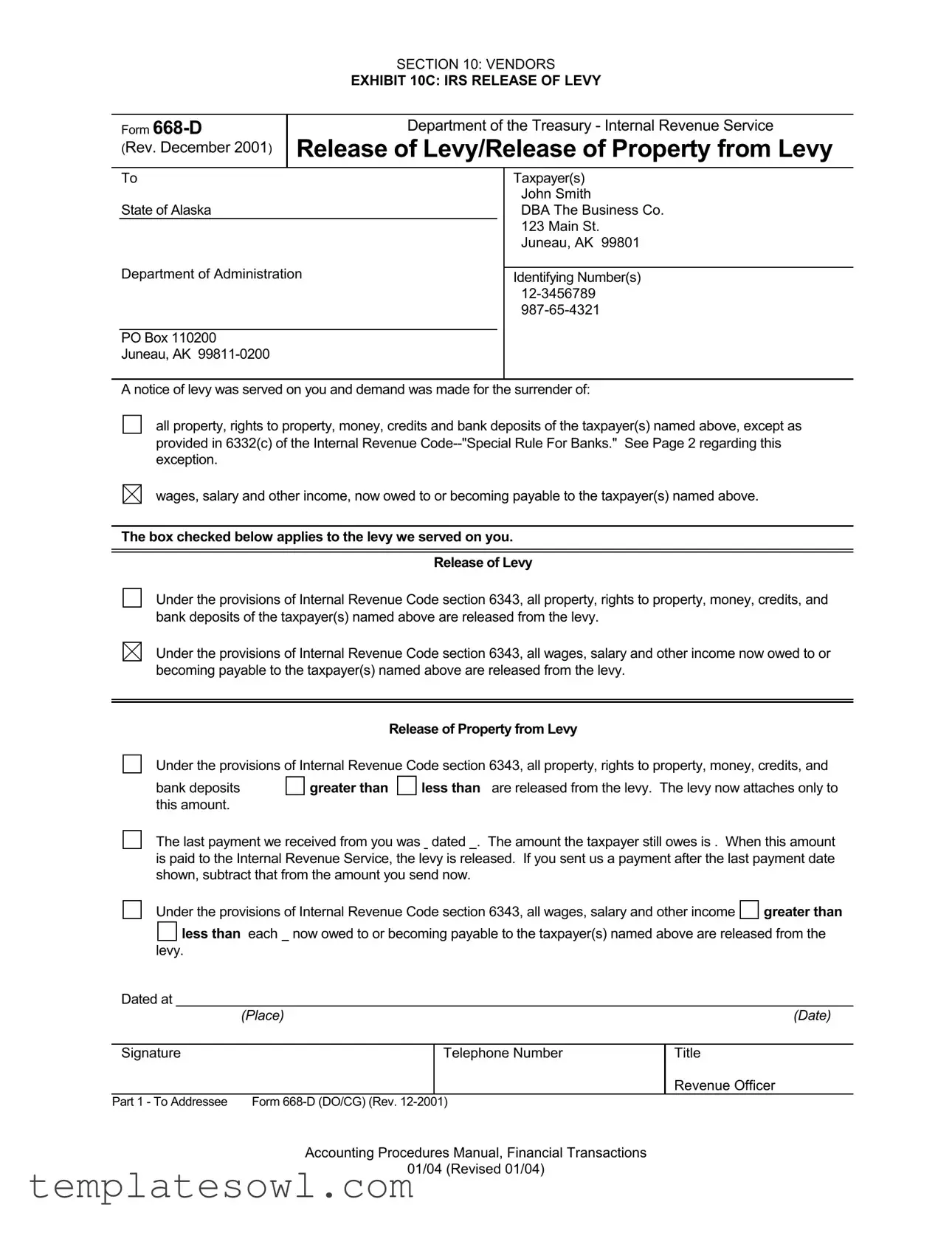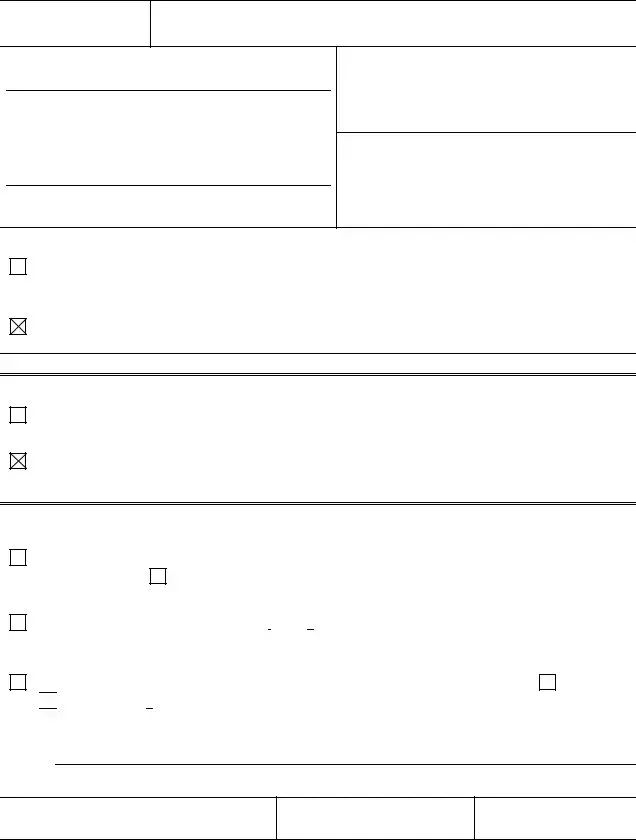What is Form 668-D?
Form 668-D is an IRS document used to formally release a levy placed on a taxpayer's property. This form notifies relevant parties that specific property, rights, or income have been released from the levy under the provisions of the Internal Revenue Code.
Who needs to use Form 668-D?
This form should be used by the IRS when a levy on a taxpayer's property needs to be released. Taxpayers, banks, and other parties involved in holding the taxpayer's assets may receive this form if it applies to their situation.
What does a levy involve?
A levy is a legal seizure of a taxpayer's property to satisfy a tax debt. It can include a range of assets, such as bank accounts, wages, and other rights to property. Form 668-D signals the release of the IRS's claim to those assets specified in the form.
What is the process for releasing a levy?
The IRS prepares and sends Form 668-D once the conditions for the release of the levy are met. This may be after full payment has been made, or if the IRS deems the levy no longer necessary. The form must be completed and sent to all relevant parties to ensure that they are aware of the release.
What should I do if I receive Form 668-D?
If you receive Form 668-D, it is crucial to acknowledge it as a formal notice that the levy on the taxpayer's assets has been released. Review the details on the form carefully, and ensure that any necessary actions, such as updating records, are taken promptly.
What happens if there is still an amount owed after the levy is released?
If there is still an outstanding balance after the release, the taxpayer will remain liable for the remaining debt. Form 668-D simply indicates that the claimed property is no longer under levy, but it does not absolve the taxpayer of their tax obligations.
What if I believe the levy was released improperly?
If you think that the levy was released in error, contact the IRS directly. It is important to address any discrepancies promptly to avoid potential issues in the future.



